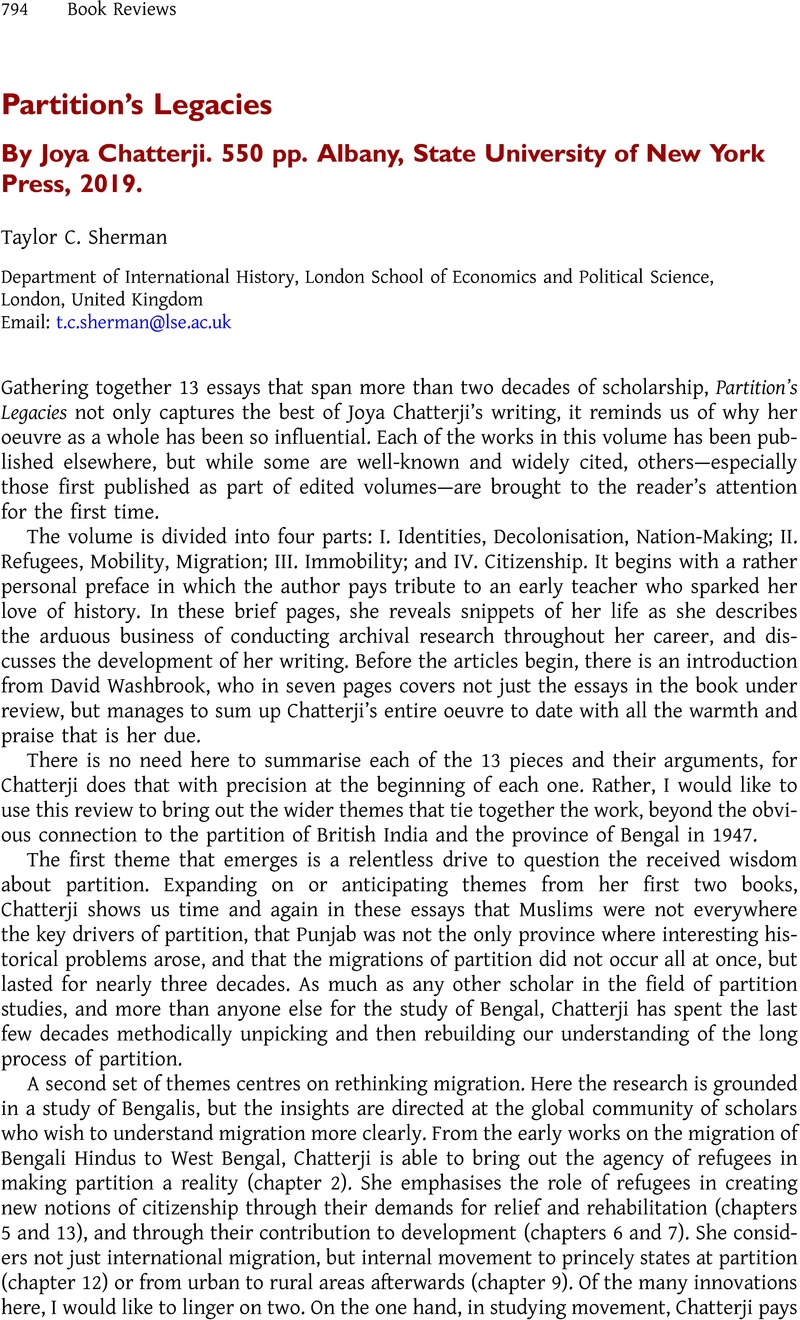No CrossRef data available.
Article contents
Partition's Legacies By Joya Chatterji. 550 pp. Albany, State University of New York Press, 2019.
Review products
Partition's Legacies By Joya Chatterji. 550 pp. Albany, State University of New York Press, 2019.
Published online by Cambridge University Press: 15 May 2023
Abstract
An abstract is not available for this content so a preview has been provided. Please use the Get access link above for information on how to access this content.

- Type
- Book Review
- Information
- Copyright
- Copyright © The Author(s), 2023. Published by Cambridge University Press on behalf of The Royal Asiatic Society



